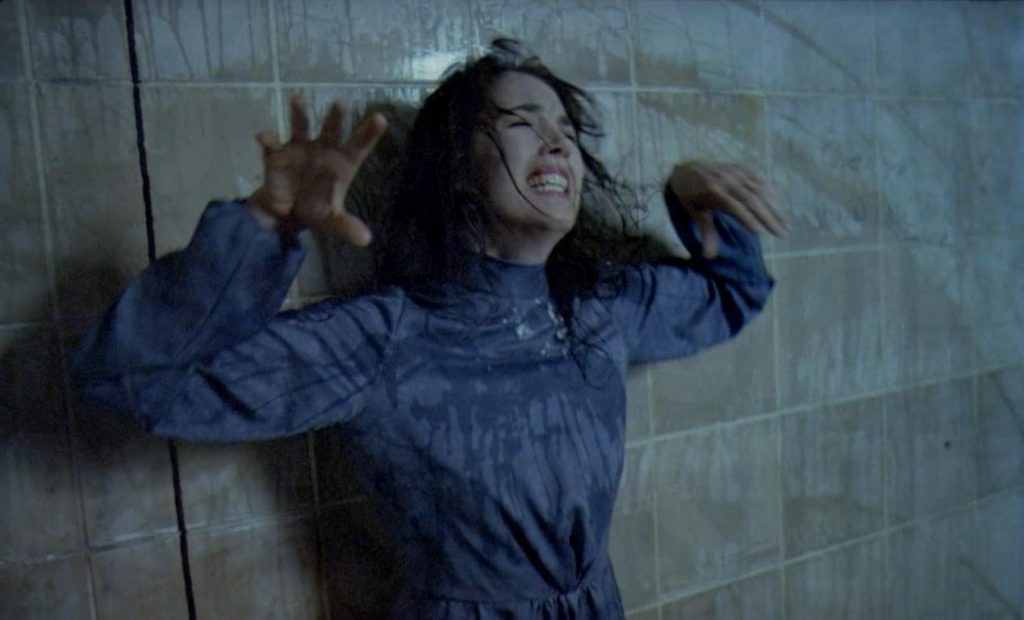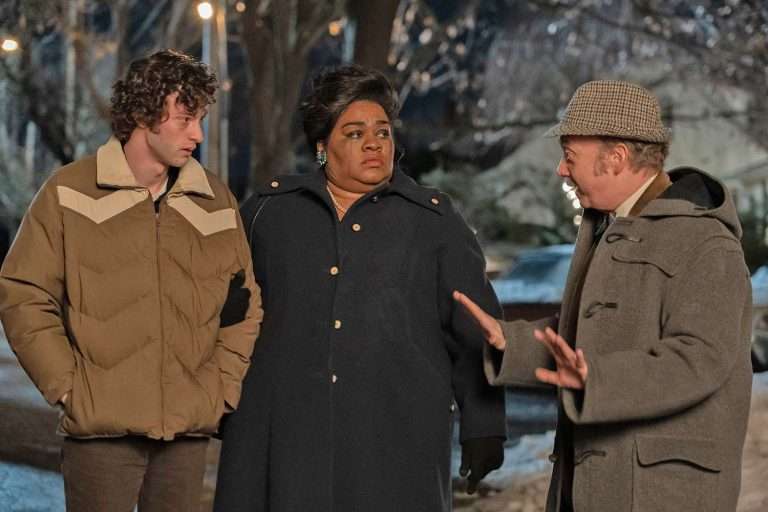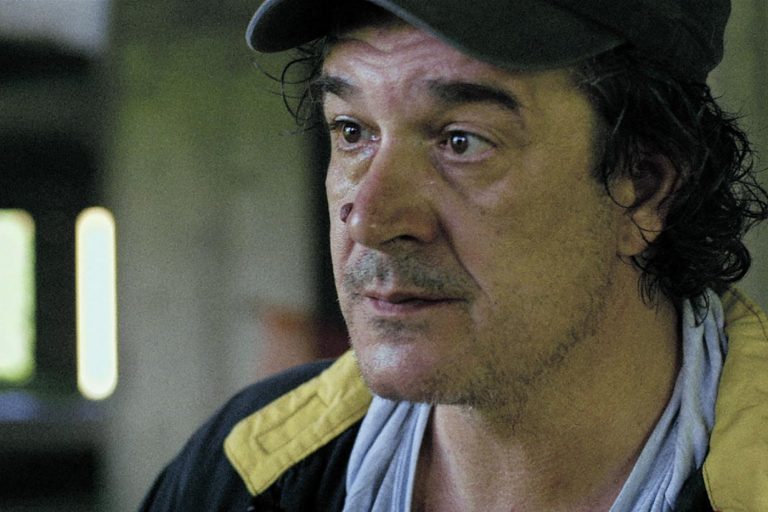The art of storytelling possesses the ability to move, disturb, and make people second-guess everything they know about the nature of love, sex, and marriage. Andrzej Żuławski’s Possession is all about that. The movie showcases the mental and physical agony that a couple goes through when their married life is sinking and when there are instances of betrayal in this sacred union.
This psychological horror cult classic still resonates in today’s times, considering how common infidelity, heartbreak, and divorce have become. The movie was banned for containing “video nasties.” However, that didn’t stop people from watching it and praising Żuławski’s story about a couple’s descent into madness. It is a controversial movie that touches upon sensitive topics like domestic violence, self-harm, murder, and child neglect.
Possession is not for the weak-hearted. It’s one of the most deranged yet profound movies ever made in the history of horror cinema. The movie brims with metaphors, allegory, and esotericism, highlighting their marital situation. It also has a unique supernatural twist to it which is an absolute treat for horror lovers. In Żuławski’s words transcribed from the audio commentary on the Alive AG DVD of Possession (2009), “Possession has an ordinary story, something that gives it meaning. And then, you have something out of the ordinary to give it a mythical dimension.”
Some scenes are downright gruesome, unsettling, and bold. The events of the film are direct, yet they can’t be easily analyzed because of Żuławski’s metaphoric ways of putting his point across. His protagonists are profound and problematic. Their problems are simple, but their reactions to them are menacing. Nothing in this movie is as simple as it looks, and it demands the viewer’s complete attention. *Please note that this article is going to be full of spoilers.*
Possession (1981) Movie Synopsis & Plot Summary:
Possession takes a disturbing dig at what happens when a marriage is on the verge of crashing and burning and what happens when you let a third party stain the sacred institution of marriage. This movie was shot in West Berlin, which is not a coincidence. West Berlin was still a divided city. It’s a clear metaphor for their marital life.
Anna (Isabella Adjani) is married to Mark (Sam Neill). They have a son named Bob. When Mark returns home after an extended gig as a spy, he finds out that his wife wants a divorce. At first, he is saddened, shocked, and apoplectic when he finds out she has been having an affair with a man named Heinrich. This infidelity devastates him. He is unable to understand his wife’s motives and actions. He is ready to forgive her and begs her to come back, but Anna is confused and doesn’t know what she wants.
Their fights become increasingly severe, and both of them go unhinged every now and then during the entirety of the movie. They fight, hit each other, break things, cry, and on one occasion, Anna tries to slit her throat, and Mark slits open his arm thrice. All this savagery takes place when Bob is in the house. Right when the viewer settles down and thinks that this is a movie full of domestic problems and family drama, it takes an unbelievable supernatural turn.
This turn of supernatural events carries the burden of their marital problems till the end without ever abandoning the actual plot of the movie. After an ugly fight with her husband, she moves out and rents a dilapidated apartment. She goes to buy groceries, and on her way back, she enters a subway tunnel. This is where the audiences need to brace themselves.
Anna’s acting is honestly one of the most dramatic, over-the-top, and terrifying things ever visualized on screen. Her screams are deafening. The viewers get to watch Anna howling as she gives birth to pus and blood. By now, she has murdered at least two people. Meanwhile, Mark storms off to Heinrich’s place and indulges in a brawl with him. When Anna spends most of her days in her apartment, Mark forms a good connection with Helen, Bob’s teacher, who surprisingly looks like Anna.
Who does Anna give birth to?
More like, “What the hell does Anna give birth to?”. It’s a tentacled monster that she secretly breeds and has sex with in her ramshackle apartment. There is a spine-chilling scene where the tentacled monster is making love to Anna, whose limbs are all tied up with his bloody and slimy tentacles.
My personal opinion is that she gave birth to the love-hate relationship she shares with her husband. It’s the physical form of her toxic marriage that is synonymous with violence, love, and longing. Whoever enters her house seems to be repulsed by this monster, except for Anna and Mark, who are clearly attracted to their toxic marriage.
Why does the monster take the shape of Mark?
That monster is an idealized version of Mark. A version that Anna wants Mark to become. When she has sex with this hideous monster, she isn’t disgusted. Anyone in her place would be appalled. However, she seems to enjoy it. It’s an allegory that she is in love with a monster who looks like a monster, whereas Mark, with his toxicity and violent nature, looks like any other human being.
He takes the form of Mark because that’s what she wants. A monster that Mark had become to turn back into a human being. For Mark to become her ideal man. Someone she can make love to as she did with the bloody creature. That’s why when this monster man reaches Helen’s apartment, Bob pleads with her not to open the door because he knows it has taken the shape of a human look-alike whom Helen would definitely fall for.
Why does Helen look like Anna?
Helen looks like Anna in Mark’s eyes because he is still in love with Anna. His marriage with Anna is still deep-rooted inside him, and he isn’t able to let go of it and move on. He either wants his new partner to become like his former partner or chooses his new partner because she looks like his former one.
Either way, his narrative is clear. It’s Anna he is unable to let go of. When Bob begs Helen to not open the door, she replies that she wants to open the door. She doesn’t realize the danger she is in. This is another symbolism to those who enter as a third party and wreck a married life. The catalyst’s life will also be ruined when they try to disrupt a marriage.
Possession (1981) Movie Themes Analyzed:
The trauma of loveless marriages:
When Anna struggles to explain why she is no longer happy in their marriage, Mark doesn’t bother trying to understand her side of the thing and escalates matters quickly by yelling and throwing things. Mark’s biggest flaw as a husband is that he fails to make his wife feel seen, heard, and validated.
Perhaps this is why she felt loveless and tried to seek love with Heinrich. Furthermore, he neglected his marriage and was away for a long time. Her miscarriage further fuelled her feelings of angst toward her marriage. On the other hand, Mark couldn’t tolerate the fact that his wife could lead a happy life without him. Lovelessness stirs so many feelings inside a human that it makes a person do unacceptable things.
Passion, Pain, Jealousy, Love, and Desire
Anna’s repressed emotions in terms of passion and desire lead her to cheat on her husband when he is away is one of the reasons for their divorce. Her husband’s jealousy turns him into a violent monster. All her repressed emotions and the turbulent times she has seen in her marriage manifest into the vile thing she gave birth to.
Mark’s love for Anna is so obsessive that he sees Anna in Helen. He wants Anna to be sweet, gentle, sensible, and hardworking. At one point, when they harmed themselves, Anna commented, “It doesn’t hurt, does it?”. It’s a clear indication that emotional pain hurts more than physical pain. It will resonate with those who have experienced grief and heartache.
Complex characters
The title of this movie may confuse people and lead them to think it’s something devilish, like The Exorcist. It’s not a satanic movie. Possession is about how you take ownership of another person’s life. You try to possess someone else. Mark tries to possess Anna, whereas Anna wants to gain control of her own life.
Mark is an unreliable narrator who shows Anna in a poor light. It’s only when we see things from Anna’s perspective that we find out Mark is as much at fault here for the downfall of this marriage as Anna. They are both selfish and consumed by their own desires. They let their feelings, needs, and carnal desires control them.
Every character wrongs someone in this movie, and they are all desperate to have their own way. The desperation to save this marriage can be seen when Mark decides to quit his job to spend time with his family. His anguish is even more evident when he ends up killing Heinrich.
Possession (1981) Movie Ending, Explained:
The film ends in an unpredictable way. Heinrich finds Mark and tells him about the monster and Anna. Mark doesn’t believe it, and they end up having a fight again. Mark kills Heinrich using the lid of the public toilet and shoves his face inside it. After killing Heinrich, Mark reaches her apartment and sets it on fire because he doesn’t want anyone to find out about the murders that Anna did in the apartment.
Mark is followed by a group of people who are determined to kill him. They could be his previous employers, policemen, or goons. One of them shoots Mark, and he is lying on the stairwell in his pool of blood. Anna arrives at the scene with the monster, who now looks like Mark. The dying Mark raises his gun to shoot him, but the people below rain down bullets on him. Anna is also shot.
She lies on top of Mark and takes his gun to shoot both of them. Perhaps Anna wanted to be loyal in the end. She is sorry that she put him through so much agony. Her love for Mark was always there, but it gets lost somewhere because desire takes over. Maybe that’s why she shot herself. And it’s just like they say, love can heal, and love can kill. It’s safe to say that this movie was way ahead of its time.





![Stephen King’s It [1990]: Poorly Executed. Terribly Dated. Downright Forgettable.](https://79468c92.delivery.rocketcdn.me/wp-content/uploads/2017/08/It-768x432.jpg)

